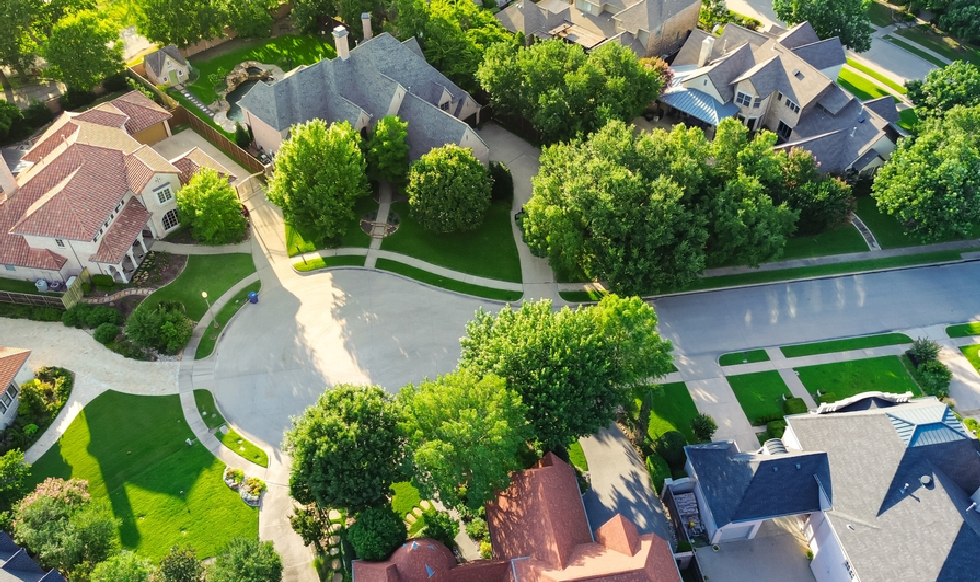The Ultimate Guide to Trimming Your Trees & Protecting Your Roof from Insurance Nightmares
Overhanging branches may seem harmless, but they pose a serious risk to your roof—and your insurance coverage. If a tree limb crashes onto your home during a storm, your insurance company may deny your claim if they determine the damage could have been prevented. The good news? DFW Storm Restoration is here to help you protect your roof and your wallet. Follow this guide to prevent costly damage, avoid insurance disputes, and keep your home safe year-round.
Step 1: Recognize the Risks of Overgrown Trees
Trees add beauty and shade to your property, but without proper maintenance, they can become a hazard. Common risks include:
- Branches scraping against shingles, wearing them down prematurely.
- Overhanging limbs breaking off during storms and puncturing the roof.
- Leaves and debris clogging gutters, leading to water damage and leaks.
To avoid these risks, regular tree maintenance is essential. DFW Storm Restoration offers expert inspections to identify potential threats before they become major problems.
Step 2: Trim Back Overhanging Branches
Cutting back trees near your home is the best way to prevent roof damage. Here’s what to focus on:
- Trim branches away from your roofline.
- Remove dead or weak limbs that could break off during high winds.
- Keep branches from touching or dragging against shingles.
If trimming your trees feels overwhelming, we can connect you with trusted tree service professionals who will handle it safely and efficiently.
Step 3: Inspect Trees After Severe Weather
After a storm, check your trees for signs of damage. Look for:
- Hanging or cracked limbs.
- Trees leaning more than before.
- Large fallen branches that could cause secondary damage.
If you notice any of these warning signs, contact DFW Storm Restoration immediately. We’ll inspect your roof for hidden damage and work with our network of arborists to ensure your trees don’t pose an ongoing threat.
Step 4: Understand Your Insurance Coverage
Many homeowners assume their insurance will automatically cover tree-related roof damage. That’s not always the case. Insurance companies may deny claims if:
- The tree was already dead or decaying before it fell.
- Branches had been scraping against your roof for years.
- You failed to perform basic maintenance to prevent foreseeable damage.
Additionally, many insurance companies may choose not to renew your policy if they determine that overgrown tree branches pose an ongoing risk to your home. If an inspector or adjuster sees neglected tree limbs too close to your roof, they could flag it as a hazard, making it harder to keep or secure homeowners’ insurance coverage in the future.
We help homeowners navigate insurance claims to ensure you receive the coverage you deserve. Our experts will document any damage, assist in filing claims, and even represent you during the adjuster’s inspection.
Step 5: Schedule a Professional Roof Inspection
Even if your roof looks fine after a storm, hidden damage can lead to costly repairs down the road. That’s why scheduling a professional inspection is critical.
DFW Storm Restoration provides free, no-obligation roof inspections to assess potential damage from falling branches, clogged gutters, and storm debris. If we find any issues, we’ll guide you through the next steps—whether it’s minor repairs or a full insurance claim.
Step 6: Act Now to Avoid Future Problems
Don’t wait until a storm wreaks havoc on your roof. Preventative maintenance is the key to avoiding expensive repairs and frustrating insurance battles. By trimming your trees now and scheduling a professional roof inspection, you’ll save yourself stress and money in the long run.
Frequently Asked Questions (FAQs)
Will my insurance cover roof damage from falling tree limbs?
Most insurance policies cover tree-related damage, but only if the damage was unavoidable. If your insurance company determines that poor maintenance was a factor, your claim could be denied.
How often should I trim my trees to protect my roof?
Experts recommend trimming your trees at least once a year, preferably before storm season, to prevent potential hazards.
Can my insurance company cancel my policy if I don’t maintain my trees?
Yes, some insurers may issue a non-renewal notice if your trees pose a risk to your home’s safety.
Who should I call if I need my trees trimmed?
DFW Storm Restoration can recommend reliable tree service professionals who can safely trim and maintain your trees.
Why Homeowners Trust DFW Storm Restoration
✔ Free, No-Obligation Roof Inspections
✔ Expert Guidance on Preventative Maintenance
✔ We Help You Navigate Insurance Claims
✔ Fast, Reliable Roof Repairs & Replacements
✔ A Hassle-Free Process That Works for You
Protect Your Home—Schedule Your Free Inspection Today!
Don’t let overgrown trees put your roof—and your finances—at risk. Call DFW Storm Restoration today at 972-897-8031 or visit www.dfwstormrestoration.com to schedule your free inspection. Let us help you safeguard your home against preventable damage and insurance headaches!

